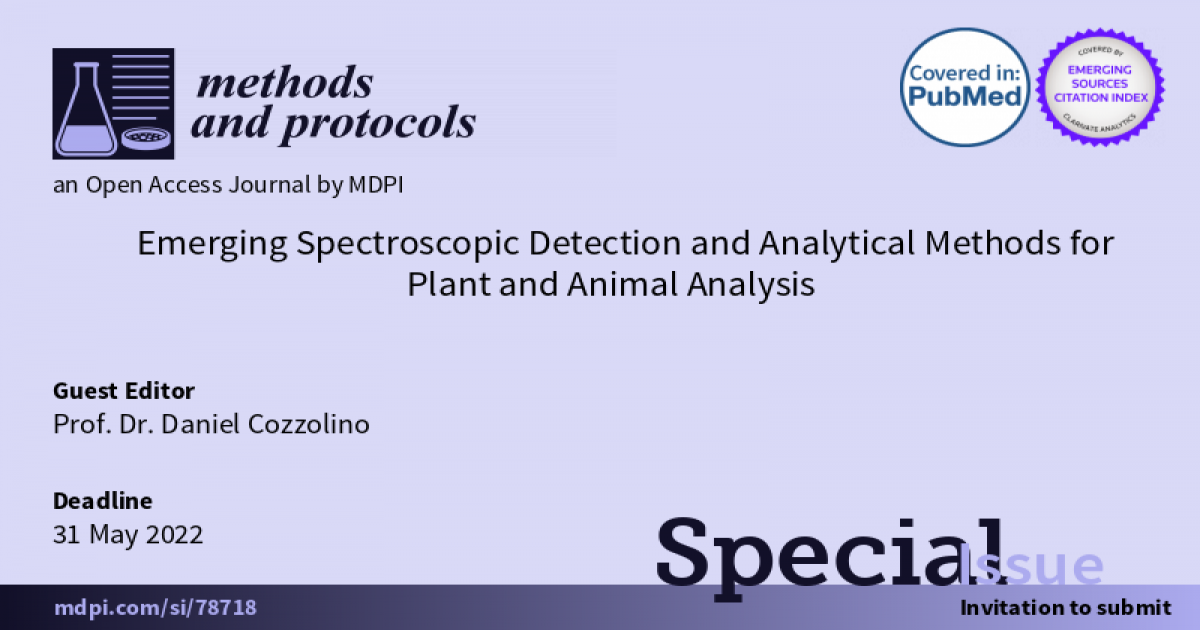Emerging Spectroscopic Detection and Analytical Methods for Plant and Animal Analysis
A special issue of Methods and Protocols (ISSN 2409-9279). This special issue belongs to the section "Biochemical and Chemical Analysis & Synthesis".
Deadline for manuscript submissions: closed (31 May 2022) | Viewed by 3657

Special Issue Editor
Interests: rapid analytical methods; NIR; spectroscopy; chemometrics; data analytics; food analysis; food provenance
Special Issues, Collections and Topics in MDPI journals
Special Issue Information
Dear Colleagues,
Advances in optics, physics, spectroscopy, and mathematics have prompted a wide range of novel applications in different fields of biology and chemistry. In particular, the utilization of near-infrared spectroscopy (NIR), mid-infrared spectroscopy (MIR), Raman spectroscopy, and hyperspectral imaging has been the backbone of the so-called high-throughput analytical methods. The advances in machine learning, new algorithms, etc. have boosted the incorporation of these techniques in many fields of research (phenotyping, functionality, etc.).
In this Special Issue titled “Emerging Spectroscopic Detection and Analytical Methods for Plant and Animal Analysis”, we welcome original research articles, review articles, innovative protocols, and reports on these topics. This Special Issue seeks high-quality works and topics focusing on the latest novel applications of NIR, MIR, and Raman spectroscopy, as well as hyperspectral imaging.
Prof. Dr. Daniel Cozzolino
Guest Editor
Manuscript Submission Information
Manuscripts should be submitted online at www.mdpi.com by registering and logging in to this website. Once you are registered, click here to go to the submission form. Manuscripts can be submitted until the deadline. All submissions that pass pre-check are peer-reviewed. Accepted papers will be published continuously in the journal (as soon as accepted) and will be listed together on the special issue website. Research articles, review articles as well as short communications are invited. For planned papers, a title and short abstract (about 100 words) can be sent to the Editorial Office for announcement on this website.
Submitted manuscripts should not have been published previously, nor be under consideration for publication elsewhere (except conference proceedings papers). All manuscripts are thoroughly refereed through a single-blind peer-review process. A guide for authors and other relevant information for submission of manuscripts is available on the Instructions for Authors page. Methods and Protocols is an international peer-reviewed open access semimonthly journal published by MDPI.
Please visit the Instructions for Authors page before submitting a manuscript. The Article Processing Charge (APC) for publication in this open access journal is 1800 CHF (Swiss Francs). Submitted papers should be well formatted and use good English. Authors may use MDPI's English editing service prior to publication or during author revisions.
Keywords
- near-infrared
- hyperspectral
- image
- mid-infrared
- Raman
- big data
- multivariate data analysis
- machine learning






